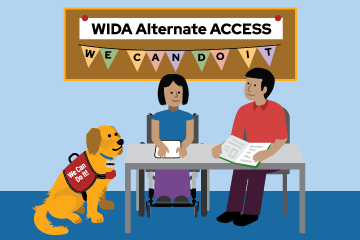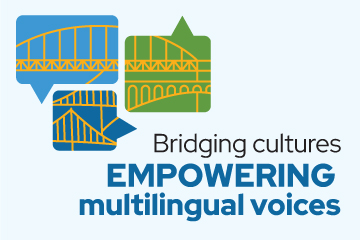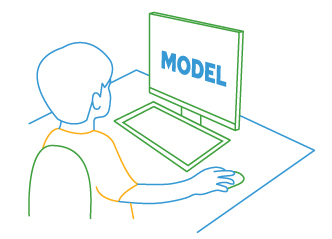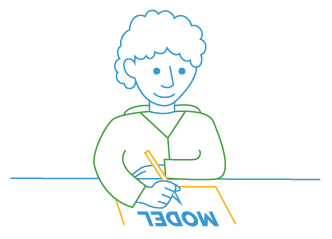Assessments designed to measure students' progress in English language development
WIDA MODEL (Measure of Developing English Language) is a suite of English language proficiency assessments for grades K-12. As a flexible, on-demand language proficiency assessment, WIDA MODEL can be administered at any time during the school year, depending on the needs of the district, school, teacher or student. Scores can be used to predict student performance on ACCESS for ELLs.
Visit the WIDA Store to purchase WIDA MODEL for your school(s).

Features
WIDA MODEL (grades 1-12) is available in both online and paper formats. WIDA MODEL for Kindergarten is a paper-based test.
MODEL test items are written to WIDA's five English Language Development (ELD) Standards:
- Social and Instructional Language
- Language of Language Arts
- Language of Mathematics
- Language of Science
- Language of Social Studies
Tests are divided into five grade-level clusters:
- Kindergarten
- Grades 1–2
- Grades 3–5
- Grades 6–8
- Grades 9–12
Each test assesses the four language domains of Listening, Reading, Speaking and Writing.
Purpose and Use
WIDA MODEL can be used to
- Determine real-time English language proficiency level scores for students
- Serve as an interim assessment during the school year
- Measure and monitor student progress over time
- Inform instructional planning as well as curricular and programming decisions
- Predict student performance on ACCESS for ELLs
Scores
WIDA MODEL scores are reported for all four domains (Listening, Reading, Speaking, Writing). In addition, score reports include three composite scores:
- Oral Language
- 50% Listening
- 50% Speaking
- Literacy
- 50% Reading
- 50% Writing
- Overall
- 35% Reading
- 35% Writing
- 15% Listening
- 15% Speaking








